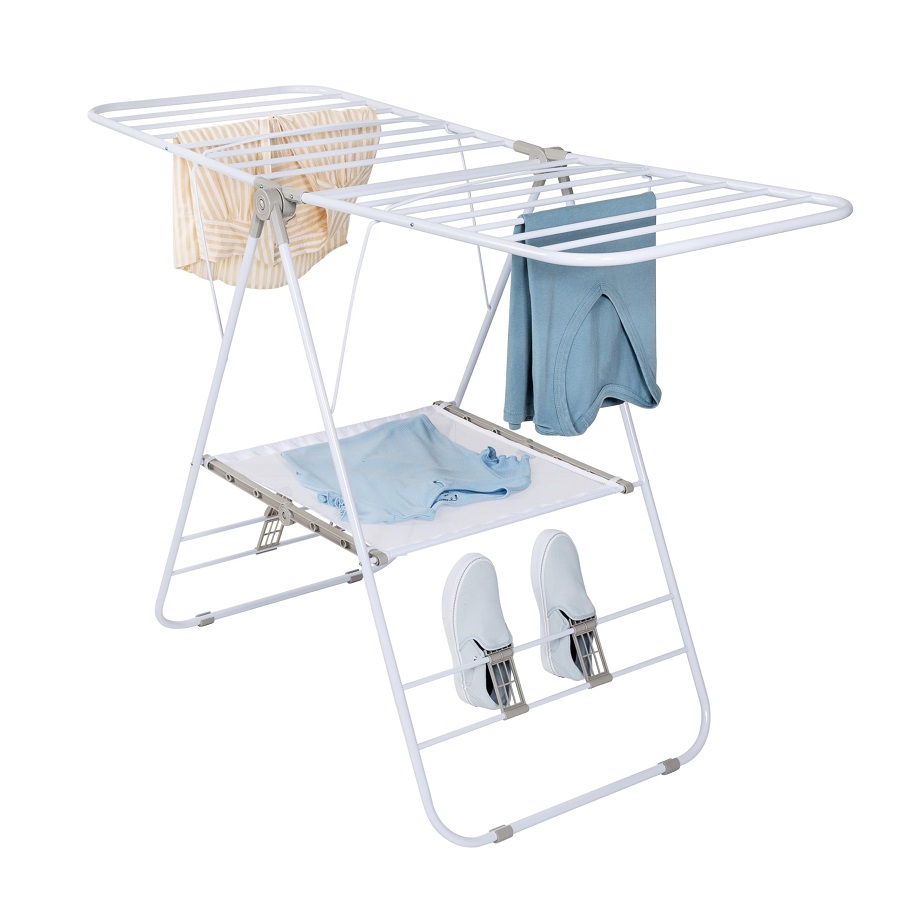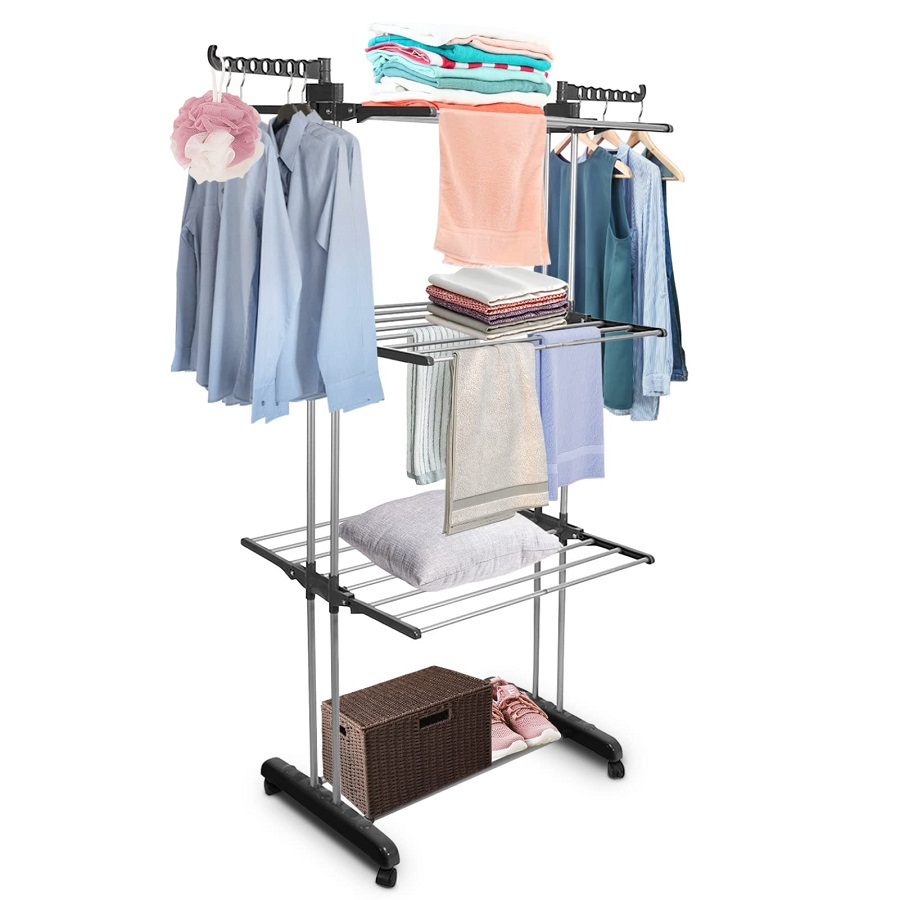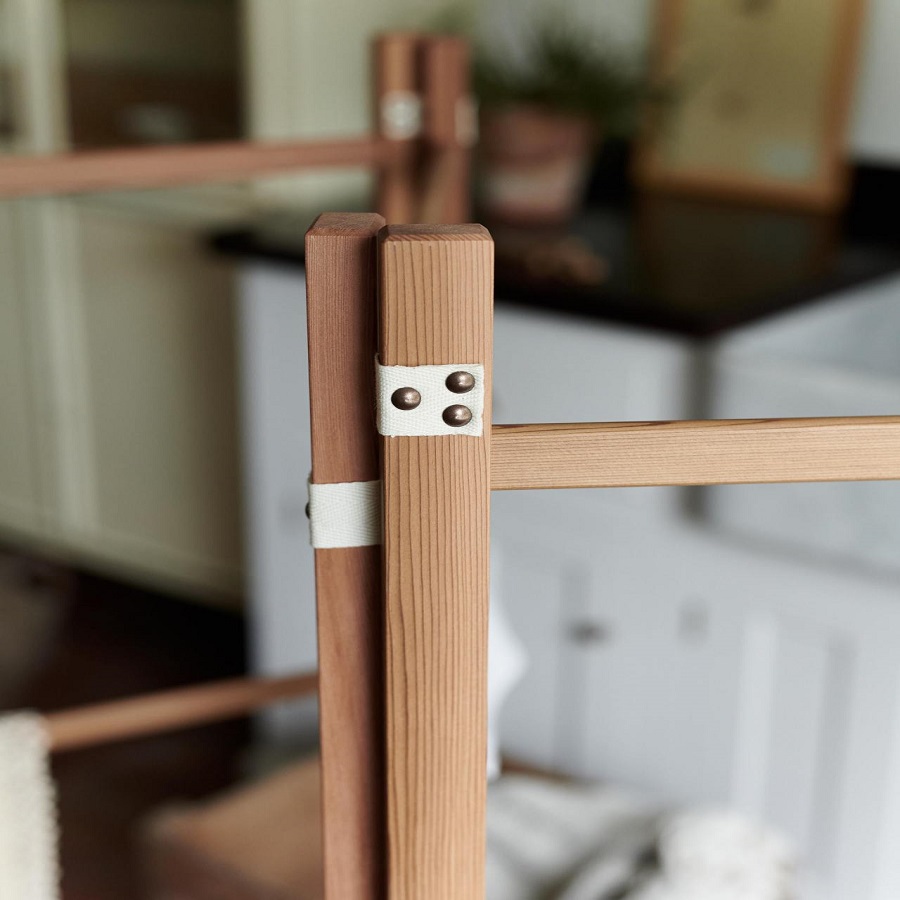Benefits of Investing in a Affordable Clothes Horse
Investing in an affordable clothes horse can bring multiple benefits to savvy shoppers. It is a cost-effective way to dry clothes without relying on an energy-consuming dryer. A cheap clothes horse is typically lightweight and easy to move, which makes it ideal for small living spaces or for those who prefer a portable drying option
Firstly, using a clothes horse saves money. Traditional dryers use a lot of electricity, which can drive up utility bills. By air-drying your clothes, you avoid these costs. Over time, the savings add up, making the initial investment in a clothes horse quite economical.
Secondly, air-drying clothing on a clothes horse is gentle on fabrics. Clothes that are dried in this manner tend to last longer, as air-drying prevents the wear and filament breakdown often caused by the high heat of a dryer. This means your clothes retain their shape and color, looking new for longer periods.
Thirdly, clothes horses are versatile. They come in various designs to fit different spaces and drying needs. Whether you have a large family or you’re a solo dweller, there’s a size and style to meet your requirements. And because they are easy to set up and take down, they are convenient for use in a variety of locations at home.
Lastly, for people concerned with their environmental footprint, using a clothes horse is eco-friendly. It reduces energy consumption, lowering your carbon footprint. With the escalating effects of climate change, choosing to use a cheap clothes horse over a traditional dryer is a responsible choice for the planet.
To sum it up, an affordable clothes horse represents savings, garment care, versatility, and environmental consciousness — all substantial benefits for any shopper staying on budget while prioritizing their apparel’s longevity and ecological impact.
 Factors to Consider When Choosing a Clothes Horse
Factors to Consider When Choosing a Clothes Horse
When looking for a cheap clothes horse, there are several key factors to consider to ensure you make an informed decision suited to your needs.
- Size and Capacity: First, measure the space you have available for the clothes horse. A compact model might be necessary for smaller homes. Also, think about how much laundry you typically hang to dry and select a clothes horse with enough line or rack space.
- Material: Clothes horses can be made from various materials like metal, plastic, or wood. A metal clothes horse might be more durable, while a plastic one is lighter and easier to move. Wood, on the other hand, can offer a more aesthetic look but might not fare as well in damp conditions.
- Design and Portability: Select a design that’s easy to set up and collapse. Wheels or a foldable structure can make your clothes horse more portable, which is especially useful if you need to move it around or store it after use.
- Durability: Look for a sturdy design that can withstand the weight of wet clothes. Check reviews to see how different models hold up over time. A durable cheap clothes horse is more cost-effective in the long run.
- Ease of Use: Make sure your clothes horse is user-friendly. It should be easy to open, close, and adjust without requiring excessive force or causing frustration.
- Additional Features: Some models come with extra features such as adjustable wings, clip-on drying racks for small items, or a shoe holder. Consider what features might be beneficial for your laundry routine.
- Price: Weigh the costs against the benefits. A cheaper model might save you money upfront but remember to consider the quality and features that come with the price tag.
In summary, savvy shoppers should look at the size, material, design, durability, usability, additional features, and price when choosing the right cheap clothes horse. Balancing these factors will help you find a model that fits both your space and your drying needs while remaining within your budget.
Types of Clothes Horses Available on a Budget
When shopping for a cheap clothes horse, you’ll find a variety of options. These are designed to meet different needs and preferences, all while being kind to your wallet. Let’s explore the types you might come across:
- Freestanding Clothes Horses: These are the most common and come in various sizes. They stand on the floor and often have multiple racks.
- Wall-Mounted Clothes Horses: These save floor space as they attach to the wall. They can be folded away when not in use.
- Over-the-Door Clothes Horses: Perfect for small spaces, these hang over doors and can be tucked away easily.
- Retractable Clothes Lines: These pull out when needed and retract back, making them discrete and space-efficient.
- Tiered Clothes Horses: Having multiple levels, these can hold a lot of laundry without taking up too much space. They’re ideal for large families.
- Radiators Clothes Horses: These are smaller units designed to hang on radiators, perfect for drying small items quickly.
Each type of cheap clothes horse serves a different purpose. For example, freestanding models are great for general use, while over-the-door versions are suited for cramped spaces. Wall-mounted and retractable lines work well for a minimalist approach to laundry. When deciding, consider your space, the volume of laundry, and your lifestyle. These budget-friendly options ensure that there’s a clothes horse for every shopper’s needs.
The Best Places to Find Budget-Friendly Clothes Horses
Finding a cheap clothes horse that suits your budget can be easier than you think. Here are several recommendations to help you find the best deals on clothes horses.
- Department Stores: Many department stores offer a variety of clothes horses at different price points. Look for sales and clearance sections where you may find discounted items.
- Home Goods Stores: These stores typically have a wide selection of laundry accessories. Check for store-brand models which are often more affordable.
- Online Retailers: Websites like Amazon, eBay, and Walmart are great for comparing prices and reading customer reviews. Keep an eye out for online-exclusive deals or coupon codes.
- Second-Hand Shops: Thrift stores or charity shops can have gently used clothes horses for a fraction of the price. Inspect the condition before buying to ensure it’s durable.
- Garage Sales: You might be surprised at what you can find at local garage sales. Bargain with sellers for even lower prices.
- Discount Stores: Shops like Dollar General or Family Dollar can have clothes horses at very low prices. The quality may vary, so choose wisely.
- DIY Options: For the crafty shopper, making your own clothes horse from materials at home can be cost-effective. Look up DIY tutorials for guidance.
Remember to use the information from earlier sections on factors to consider when choosing a clothes horse to guide your purchase. By exploring these places, you increase your chances of finding a cheap clothes horse that meets your needs without stretching your wallet.
Tips for Maximizing the Use of Your Clothes Horse
To get the most out of your cheap clothes horse, follow these practical tips:
- Arrange Clothes Strategically: Hang larger items on the outer edges. Place smaller ones in the middle. This ensures even drying.
- Use Hangers: For shirts and dresses, use hangers. This minimizes wrinkles and speeds up drying.
- Leave Space: Don’t overcrowd your clothes horse. Air needs to circulate to dry clothes effectively.
- Balance the Load: Distribute the weight evenly across the clothes horse. This prevents it from tipping over.
- Rotate Regularly: Move clothes around partway through drying. This achieves consistent dryness throughout.
- Dry Indoors and Outdoors: Use your clothes horse outside when the weather is good. Bring it indoors in bad weather.
- Be Mindful of Fabrics: Place delicate items in areas with less sun exposure. This prevents damage from UV rays.
- Foldable Sections: If your clothes horse has wings or foldable sections, use them for larger batches of laundry.
- Clip-on Accessories: Utilize clip-on drying racks for socks and small items to save space.
By employing these simple strategies, you can dry your clothes more efficiently and extend the life of your cheap clothes horse.
How to Maintain and Store Your Clothes Horse
To ensure your cheap clothes horse stays in good condition and serves you for a long time, follow these maintenance and storage tips:
- Clean Regularly: Wipe down the racks with a damp cloth to remove dust and lint. This helps prevent buildup that can transfer to clean laundry.
- Check for Damage: Inspect joints and connections for signs of wear. Tighten any loose screws to prevent collapse or injury.
- Dry Before Storing: Before folding your clothes horse away, make sure it’s completely dry. This prevents rust on metal parts and mold on wooden or plastic ones.
- Store in a Dry Place: Choose a dry area for storage to protect against dampness, which can damage your clothes horse over time.
- Fold Properly: Collapse your clothes horse according to the manufacturer’s instructions. This avoids bending or breaking parts.
- Protect from Elements: When not in use, keep your clothes horse away from direct sunlight and rain, as excessive exposure can weaken its structure.
By caring for your cheap clothes horse with these simple steps, it will remain functional and reliable, saving you money in the long run by avoiding the need for replacements.
DIY Clothes Horse Ideas for the Crafty Shopper
For those who love DIY projects, creating your own cheap clothes horse is rewarding. It also tailors the design to your specific needs. Here are some DIY clothes horse ideas that are straightforward and economical:
- PVC Pipes Design: Assemble a simple structure using PVC pipes. They’re light, affordable, and easy to work with.
- Wooden Frame: Craft a classic clothes horse from wooden planks or dowels. It offers a rustic charm and sturdiness.
- Ladder Conversion: Transform an old ladder into a vertical clothes horse. It’s a space-saver and uses existing materials.
- Freestanding Foldable Rack: Create a collapsible rack from scrap wood for easy storage. It can handle a good amount of clothes.
- Wall-Mounted Drop-Down: Build a drop-down rack that mounts to the wall. Fold it up when not in use to save space.
- Repurposed Furniture: Modify an old furniture piece, like a chair or bookcase, into a unique clothes horse.
- Ceiling-Mounted Pulley System: Install a pulley system to hoist clothes high and utilize warm air that rises.
Each of these DIY ideas allows you to build a cheap clothes horse with a personal touch. Make sure to treat any wooden parts to resist moisture. Also, ensure stability and strength to support wet laundry. With these crafty solutions, you not only save money but also have a custom creation that meets your drying requirements perfectly.
Environmental Impact of Using a Clothes Horse vs. Clothes Dryers
Choosing a cheap clothes horse over a dryer can greatly benefit the environment. Traditional dryers consume a lot of electricity. This consumption contributes to carbon emissions and global warming. Clothes horses, however, rely on natural air flow for drying. This means zero energy use from the device itself. By air-drying laundry, you reduce the demand for power. This, in turn, lessens fossil fuel burning by power plants.
Reduced Energy Consumption: With a clothes horse, you use no electricity. This cuts home energy use and shrinks your carbon footprint.
Less Air Pollution: By not using powered dryers, you contribute to less pollution. Fewer emissions mean cleaner air to breathe.
Longer Clothing Life: Air-drying is gentle on fabrics. It avoids the breakdown often caused by dryer heat. This means clothes last longer. We reduce waste and the need for new clothes production.
Lower Resource Usage: When clothes last longer, we use less water and raw materials. Making new textiles can harm the environment. We save these resources by preserving our clothing longer.
Encouraging Sustainable Practices: Using a clothes horse can inspire other green habits. It shows a commitment to reducing personal impact on the earth.
In summary, swapping a dryer for a cheap clothes horse aids the planet. You consume less power, create less pollution, and promote sustainable living. It’s an easy step with a positive impact on the environment.

